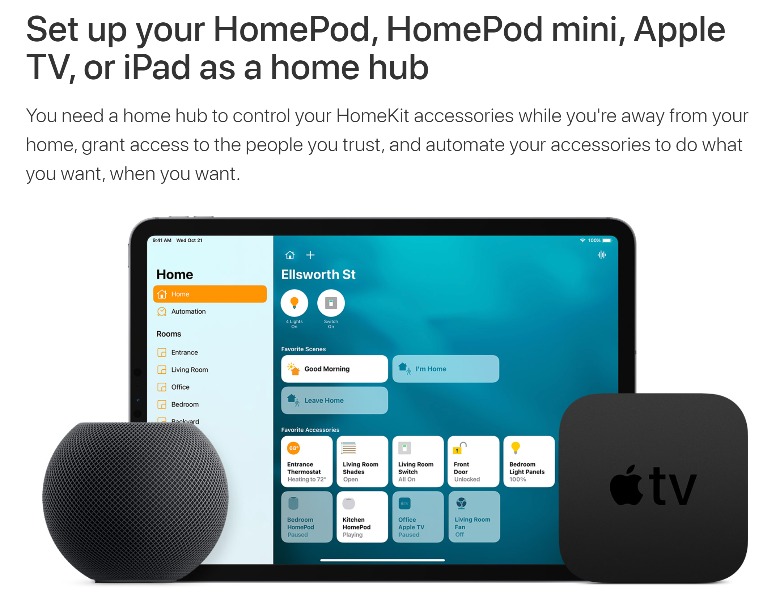The footnote reads, “Sharing a home and receiving Home notifications require a home hub. Only Apple TV and HomePod are supported as home hubs,” which explicitly leaves iPads out of the picture. On some level, it makes sense because iPads are meant to be mobile, and a smart home hub is meant to stay at home. Making the Apple TV and HomePod the only supported home hubs ensures that you don’t accidentally take your iPad “Smart Display” out with you and take down your smart home setup.
At the same time, utilizing iPads as home hubs could be a way to prolong the use of an iPad that is no longer “mobile-worthy” for one reason or another. These tablets often stay at home, perhaps for family use, and offer a dedicated Home Hub display that frees your iPhone and iPad for regular use. As well, Apple still lists the iPad as a device that can be used as a home hub on a support web page, as shown in the screenshot below; it’s unclear why the company would change its mind about this particular usage. Regardless, these old iPads might suddenly find themselves without a purpose, even if they’re capable of running iPadOS 16.
HomeKit itself isn’t changing much in iOS 16 and feels more like an incremental upgrade than something completely revolutionary. That includes a new Home app with a more streamlined user interface as well as a new view that shows all your rooms and accessories at a glance. It does set the stage for supporting the new Matter cross-platform smart home standard, but that, too, will run only on Apple TVs and HomePods when it arrives later this year.
Stay connected with us on social media platform for instant update click here to join our Twitter, & Facebook
We are now on Telegram. Click here to join our channel (@TechiUpdate) and stay updated with the latest Technology headlines.
For all the latest gaming News Click Here
For the latest news and updates, follow us on Google News.

